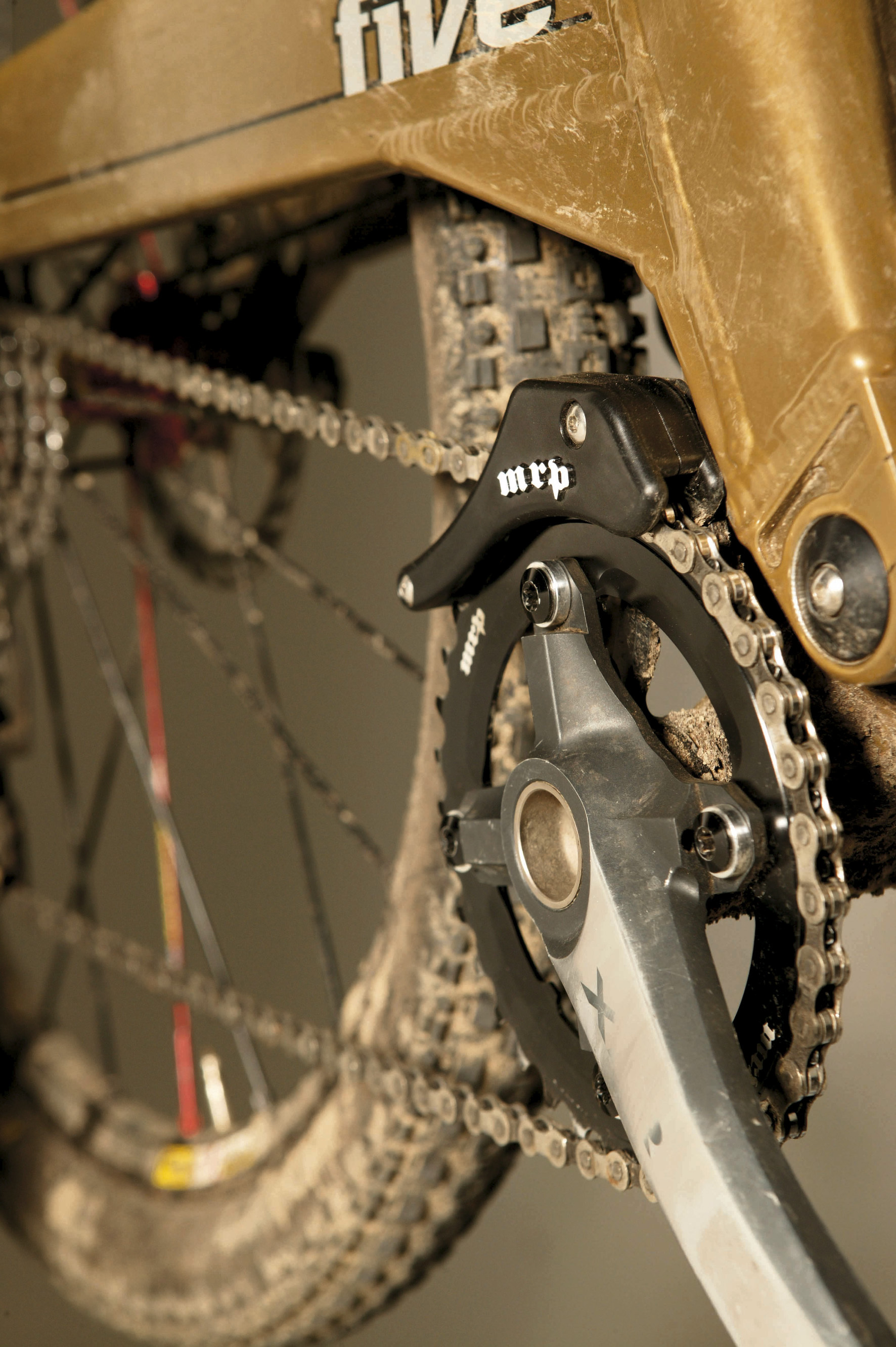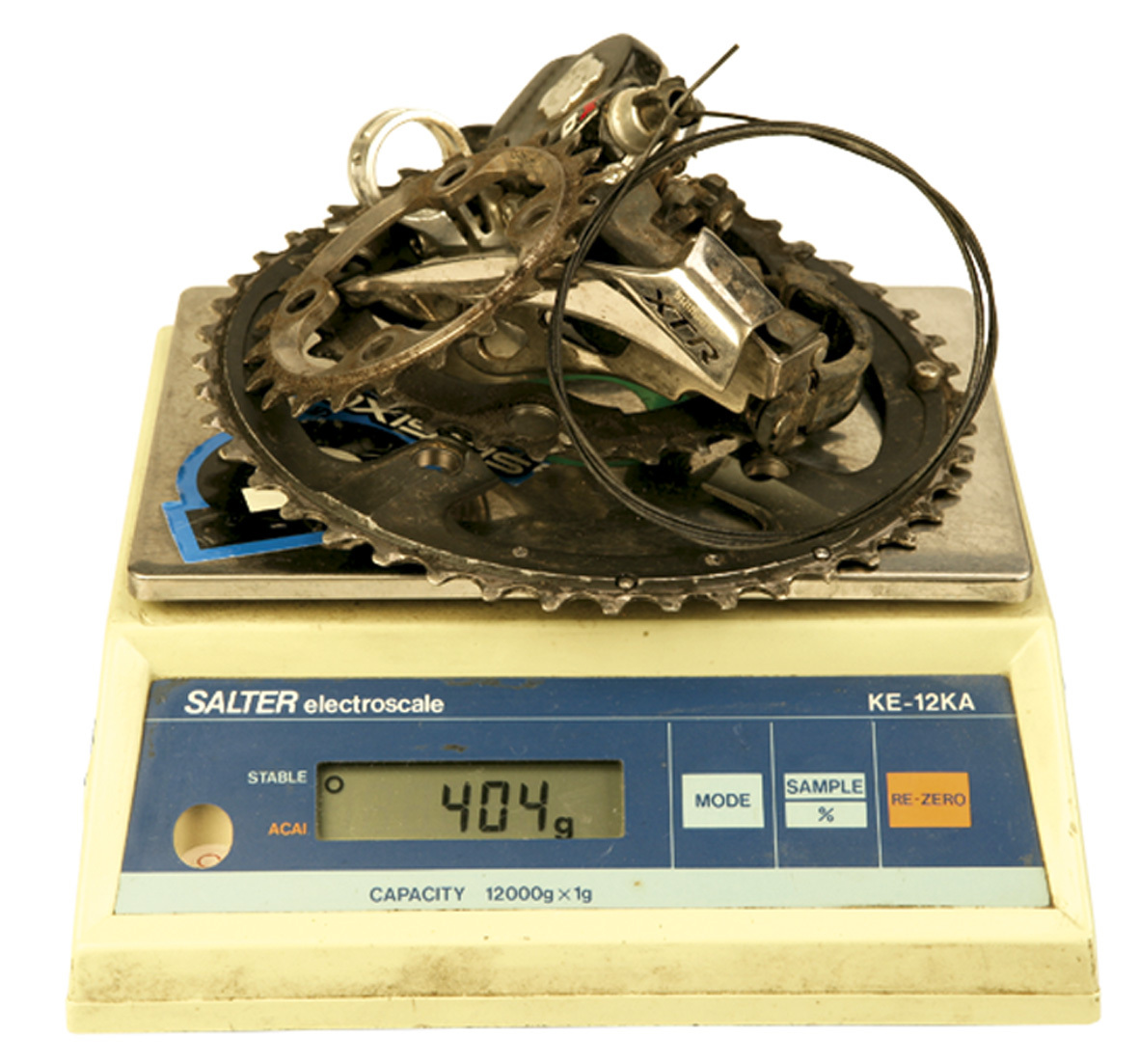MRP 1.X Chain device review
 MRP is well known for making chain devices for DH bikes, but cross-country riders can now benefit from its expertise with the 1.X, a chain device designed for XC riding, albeit with a 1×9 drivetrain. The device comes in two separate parts — an aluminium back plate, which mounts between the bottom bracket shell and cup, and a thermoplastic guide to channel the chain.
MRP is well known for making chain devices for DH bikes, but cross-country riders can now benefit from its expertise with the 1.X, a chain device designed for XC riding, albeit with a 1×9 drivetrain. The device comes in two separate parts — an aluminium back plate, which mounts between the bottom bracket shell and cup, and a thermoplastic guide to channel the chain.
There are two sizes available: a 32-36 tooth and a 32-40 tooth — the smaller size is lighter and is designed so the back plate is hidden by the guide, which looks far neater. Both devices run on single chainrings and work with eight or nine-speed (or 10-speed XX) systems.
Installation is straightforward, but we had a slight compatibility problem when fitting the 1.X to an Orange Five. With the back plate in the stated o’clock position the guide wouldn’t clear the top of the swingarm. Angling the plate across helped, although then we noticed increased chain rub. Five silver spacers are included to pack out the double chainring bolts — but we’d like to see black as they’d look better.

Ditching the front derailleur, front shifter, two rings, gear cable and set of chainring bolts from our test bike saved 442g (nearly a pound) in weight. This is significant but removing 18 gears from your bike is a bold move, especially when you consider the highest gear on a 44, 32, 22 chainset and 11-34 tooth cassette is 104 inches (the accepted measurement for gear ratios) and the lowest is around 18in. With the 1×9 set-up and 36-tooth ring you’re looking at a top gear of 85in and bottom gear of 27.5in.
For normal riding the bottom gear is too big, but since the 1.X was designed for racing on courses without a big elevation change it probably won’t matter too much. It could then be argued that on these types of courses weight saving isn’t as important, so why bother making the switch to the 1.X? The big advantage could be riding in mud — it’s simpler, lighter, offers better clearance and reduces the risk of chainsuck.
Also, on really muddy race courses you tend to slog around in the middle ring anyway. Is it something I’d recommend to trail riders? If you find yourself in the middle ring for most of your rides then yes it has a place as you can use a hardwearing ring, reduce wear on the whole drivetrain and save weight, but there’s a part of me that thinks it’s a step closer to riding singlespeed. PB
mbr rating: 7















